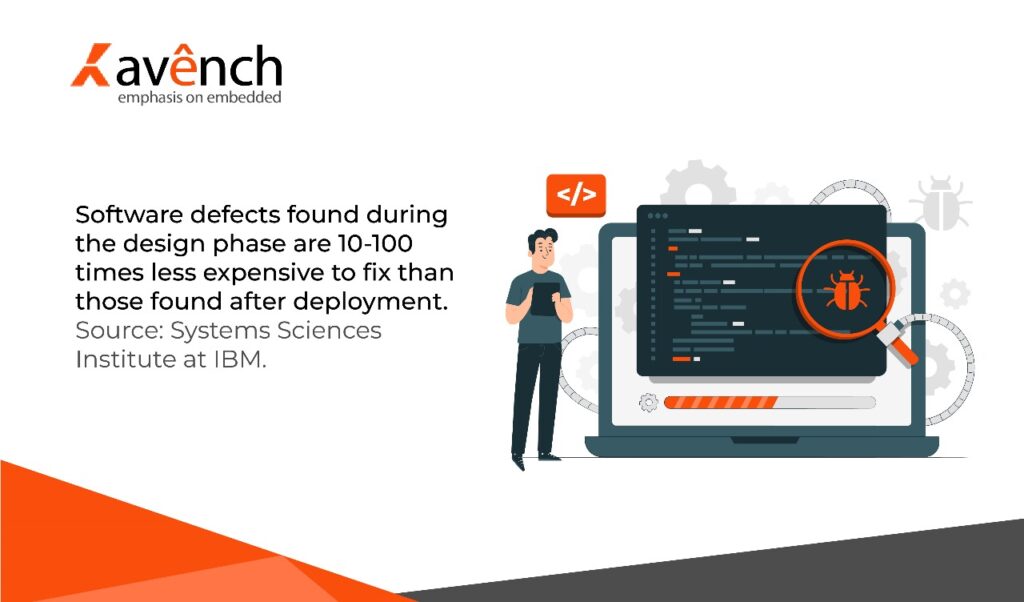When designing embedded systems, there’s always a tendency to focus on the more tangible aspects—hardware selection, processor capability, memory constraints, and so on. However, one critical step is often overlooked, a step that can make or break the effectiveness of your embedded software design: requirements validation.
While this might sound like a routine task, requirements validation is far more intricate than merely jotting down specifications. It’s about ensuring that every function, performance metric, and interaction is correctly identified, modelled, and verified before a single line of code is written. Skipping or inadequately addressing this phase can result in design flaws, extended development times, and cost overruns. Let’s break down why this step is so critical in the world of embedded software design.
Understanding Requirements Validation in Embedded Software Design
In software development, especially for embedded systems, the requirements validation phase involves defining clear, testable requirements that align with both the hardware and the operating environment. The complexity of embedded systems demands precise interaction between hardware and software, and overlooking any aspect of these interactions can introduce significant challenges.
The issue with embedded systems is that they’re often constrained by hardware with limited resources. A failure in properly validating requirements can lead to inefficient use of memory, power, or processing capabilities, all of which are crucial in embedded systems. Further complicating matters, embedded systems often interact with real-world elements such as sensors, actuators, or even other embedded devices. This makes it all the more important to fully understand how each part of the system works and interacts before moving forward with development.
When it comes to embedded software design services, failing to validate the requirements early on means you’re more likely to encounter late-stage modifications, which can be costly and time-consuming. If you’re working on a system where safety or real-time processing is critical, such failures could result in catastrophic outcomes.
How to Properly Validate Requirements in Embedded Software Design
Effective requirements validation requires a structured process that involves stakeholders, engineers, and testers at every stage. Here are key steps that should be part of your validation process:

1. Stakeholder Involvement
Gather inputs from all stakeholders to ensure that every aspect of the system’s expected functionality is covered. These stakeholders might include hardware engineers, software developers, project managers, and end users. Their insights are crucial in defining what the embedded system should do and how it should interact with the environment.
2. Testability of Requirements
Every requirement must be measurable and testable. Ambiguous or vague requirements leave room for misinterpretation, which can lead to poorly designed software. For example, instead of specifying that the system must be “responsive,” you need to define exact parameters—e.g., “the system should respond to an input within 2 milliseconds.”
3. Realistic Environmental Constraints
In embedded software design, you have to deal with environmental constraints—power limits, real-time requirements, harsh operating conditions, etc. These need to be accounted for when defining the system’s behaviour. A failure to validate against environmental constraints can lead to critical failures once the software is deployed in real-world conditions.
4. Modeling and Simulation
Before developing the actual software, model the system using simulations. This allows you to check the interactions between hardware and software, as well as between different software modules. Simulations can help identify bottlenecks, resource conflicts, or other issues long before they become expensive to fix.
5. Iterative Reviews
Review the requirements and their testability at various stages of development. It’s not a one-time exercise. As the project progresses and more details come into play, adjustments to the requirements might be necessary. Regular reviews ensure that your embedded software design stays aligned with the system’s goals and constraints.
The Impact of Overlooking Requirements Validation

Failure to perform thorough requirements validation in embedded software design & services can have a series of negative consequences, including:
- Performance Degradation: If the software doesn’t meet the hardware’s real-world constraints, the system might function but perform poorly—using more power than necessary, lagging in responsiveness, or failing under stress.
- Increased Development Costs: Discovering requirement gaps late in the project cycle often requires extensive redesign and rework, which can inflate the development budget.
- Safety Risks: In applications like automotive, aerospace, or medical devices, incorrect software behaviour can pose significant safety risks. In such systems, ensuring that all requirements are verified and validated is not optional; it’s mandatory.
For instance, in the case of autonomous vehicles, embedded systems have to process real-time data from multiple sensors to make split-second decisions. If these interactions are not validated against real-time constraints during the design phase, you risk the system making incorrect or delayed decisions, potentially leading to accidents.
Real-World Example: Embedded Software Failures Due to Poor Requirement Validation
Let’s look at a real-world example. In 2015, a major automaker recalled over 1.4 million vehicles due to a vulnerability in its embedded software. The issue? The system’s embedded software design did not account for external communications threats, allowing attackers to remotely control the vehicles. This catastrophic failure could have been avoided if the requirements validation had included thorough testing against all possible interaction points.
Similarly, in the aerospace industry, several satellite launches have failed due to overlooked interactions between software modules and hardware components, emphasizing the importance of validating every requirement.
The Role of Embedded Software Design Services
Companies that offer embedded software design services often emphasize the importance of this validation step because they understand its critical nature. These service providers bring in specialized tools and expertise to model, test, and validate requirements under various conditions, ensuring that the software is fully aligned with the hardware constraints and real-world operational conditions.
When done properly, embedded software design results in efficient, reliable, and robust systems that can handle even the most complex tasks. However, skipping the essential step of requirements validation can lead to a cascade of issues that could easily have been avoided.
In conclusion,
before starting your next embedded project, take the time to thoroughly validate every requirement. This overlooked step could be the key to ensuring that your embedded system functions efficiently, safely, and cost-effectively.
For more information on embedded product design companies in usa subscribe to our blog. For sales queries, contact us at +1 (775) 404-5757 or email sales@avench.com. We are here to assist you.

